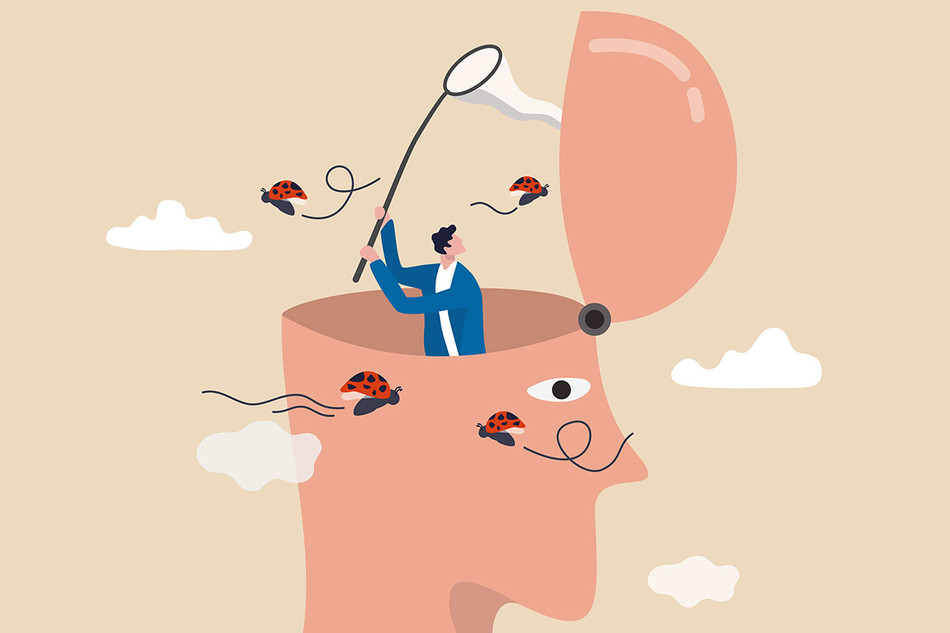In her new book, Attention Span: A Groundbreaking Way to Restore Balance, Happiness and Productivity, UC Irvine informatics professor Gloria Mark ’91GSAS shares two decades of research on how technology has affected our ability to focus at work and at home — and how we can start to get that skill back.
You conducted a study that showed that in 2004, the average office worker switched between tasks every 2.5 minutes. In 2012, it was every seventy-five seconds, and in 2022, it was every forty-five seconds. How did we get to this point?
People have gradually spent more and more time using technology, and technology makes it difficult to focus because it provides infinite external distractions. Smartphones give us access to screens all the time, and things like text messages and e-mails draw us out of our current task. But external distractions aren’t the only problems in an increasingly digital world. Humans are actually inherently motivated to self-interrupt, which means that we constantly have urges to do something else. So even if we turn off audio or visual signals, just knowing that we can stop our current task at any point to go online or check social media is difficult to ignore.
Why is this such a problem? Are we just becoming a society of multitaskers?
We know from decades of research that when people shift their attention, every task takes longer to complete, and they are more likely to make errors. There’s something called a switch cost, which means that even if an interruption is short, it takes time to get back into the flow of the original task. But in addition to hindering productivity, shifting attention causes stress. We’ve conducted lab studies where we’ve hooked people up to heart-rate monitors and blood-pressure gauges and found spikes in stress levels with every interruption.
Despite this, you argue that taking breaks is necessary, as long as you do it mindfully. What’s the best way to take a break?
People really do have a limited attentional capacity, and most of us are not able to focus on one task for long stretches of time. So it’s very important to be proactive and take a break. I like to recommend doing a simple rote activity. Rote attention is a state in which your mind is engaged but on an easy task like knitting, gardening, or playing simple games. Maya Angelou used to talk about her “big mind” and her “little mind.” She used her “big mind” when she was writing, and her “little mind” for doing crossword puzzles during breaks. Rote activities are proven to reduce stress and can actually improve divergent or creative thinking, because they keep the brain active while allowing our thoughts to wander. If you’re someone who gets stuck in a rabbit hole doing rote activities, though, I recommend setting a time limit so you can get back to your main task.
Are there techniques that we can use to train our brains to focus?
One thing I recommend doing when you find yourself getting distracted is asking yourself why. Why are you reaching for your phone? Why are you looking at social media? Why are you checking e-mail? Try to understand the reasons. Are you doing it because you’re bored? Because your task is too hard? Because it’s a habit? As soon as you become aware of the reason, you have the chance to correct that behavior. You can also practice what’s called forethought, which means imagining your future self later in the day and considering how this behavior is going to affect you. So if you’re on social media for thirty minutes or an hour, will that interruption mean you’ll be working late?
In the book you outline the paradox of work in the digital age: that distractions like texts and e-mails can hinder our productivity but are also integral to our jobs. We often can’t ignore those notifications, or we’ll fall behind. How do we strike a balance?
I talk about strategies to control our own distractions, but I actually think we need to think about bigger solutions on the organizational or societal level. Within organizations, team leaders can employ tactics such as “quiet hours,” so employees know that there’s a certain period of time that they are not expected to respond to messages. On a societal level, I’m a big fan of France and Ireland’s “right to disconnect” laws, which free employees from the burden of having to answer electronic communications after work hours. Workers who have regular meaningful mental breaks from their jobs tend to be able to focus better when they’re back on the clock.




